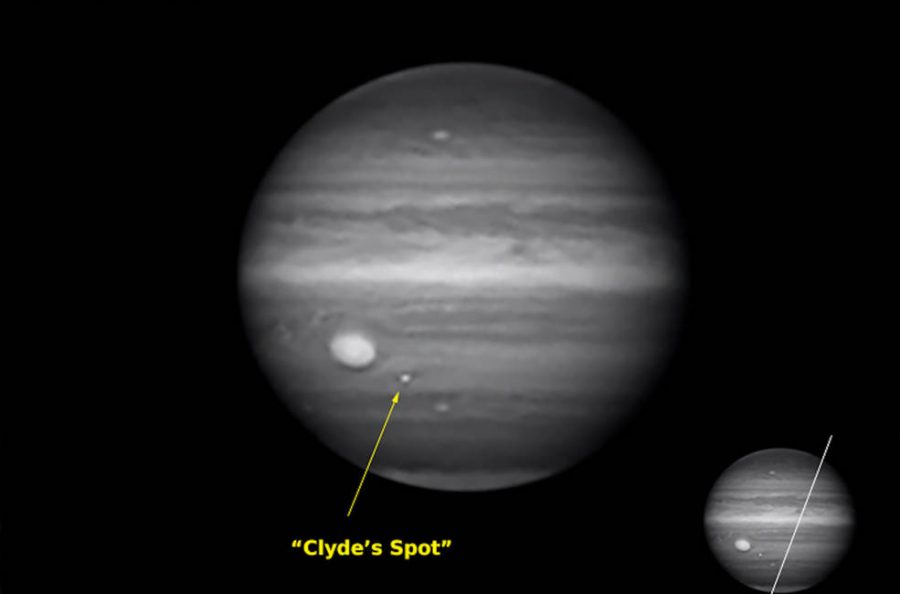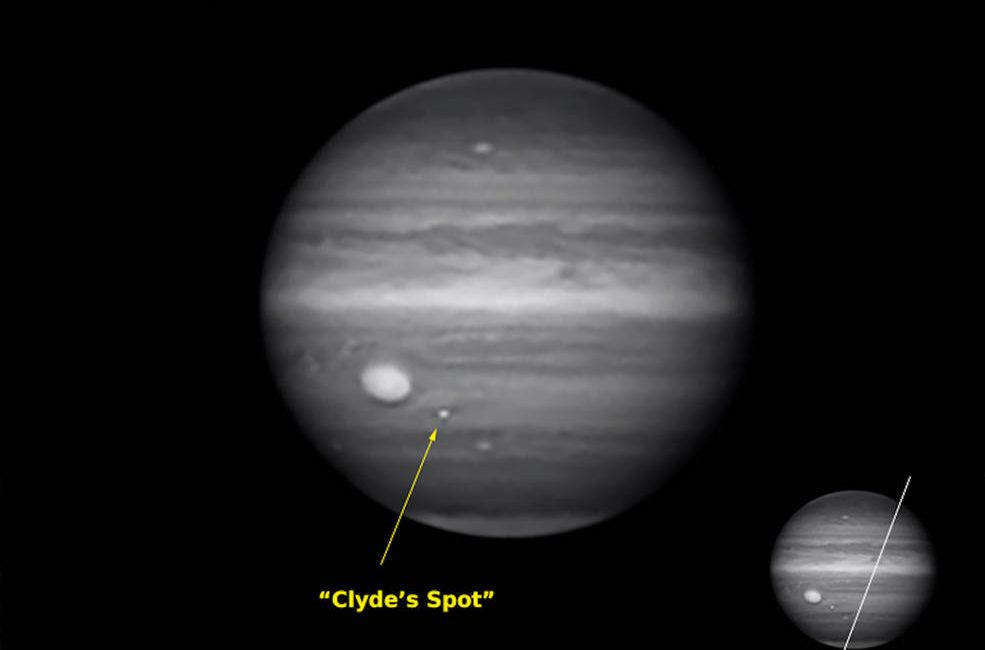
Clyde’s Spot on Jupiter Named for South African Astronomer
An amateur astronomer in Centurion, South Africa, has discovered a new storm over the planet Jupiter that is now being called after him, Clyde’s Spot, according to NASA. On May 31, Clyde Foster was imaging Jupiter with his telescope when he noticed a new oval-shaped spot in an area where several storms, including the Great […]

An amateur astronomer in Centurion, South Africa, has discovered a new storm over the planet Jupiter that is now being called after him, Clyde’s Spot, according to NASA.

On May 31, Clyde Foster was imaging Jupiter with his telescope when he noticed a new oval-shaped spot in an area where several storms, including the Great Red Spot, have been churning in the planet’s atmosphere for many years, the National Aeronautics and Space Administration said on its website.
Foster is apparently a retired chemical engineer.
“Foster noticed a new spot, which appeared bright as seen through a filter sensitive to wavelengths of light where methane gas in Jupiter’s atmosphere has strong absorption. The spot was not visible in images captured just hours earlier by astronomers in Australia.”

Foster told Mybroadband that “outbreaks” like this were relatively rare in the particular region of Jupiter where he found it, which was why the discovery created quite a bit of interest in the professional-amateur planetary science community.
“It is a regular occurrence in Jupiter’s North and South Equatorial belts, but substantially rarer in this location, the South Temperate region,” he told the news site.
On June 2, two days after Foster’s observations, Juno performed its 27th close flyby of Jupiter. NASA said the spacecraft can only image a relatively thin slice of Jupiter’s cloud tops during each pass. Although Juno would not be travelling directly over the outbreak, the track was close enough that the mission team determined the spacecraft would obtain a detailed view of the new feature, which has been informally dubbed “Clyde’s Spot.”
“The feature is a plume of cloud material erupting above the upper cloud layers of the Jovian atmosphere. These powerful convective ‘outbreaks’ occasionally erupt in this latitude band, known as the South Temperate Belt (JunoCam observed another outbreak at this latitude back on Feb. 7, 2018).”
“At the time the images were taken, Juno was between about 28,000 miles (45,000 kilometers) and 59,000 miles (95,000 kilometers) from the planet’s cloud tops at latitudes of between about 48 degrees and 67 degrees south.”
